Cosmos Facts Hard to Believe
On April 1, it is customary to deceive or poke fun at everyone, but I will go against tradition. Even on this day, I can not afford to deceive readers. Therefore, I will talk about real facts that caused my surprise. Of course, for some, these facts will not be news, but I hope that at least something will be able to interest everyone. And I also hope that many, like me, and contrary to the precepts of Sherlock Holmes, are dragging not only what is necessary, but also simply interesting, into their brain loft. I would be glad if this April Fools collection will force someone to get deeper into the sources and double-check my statements.
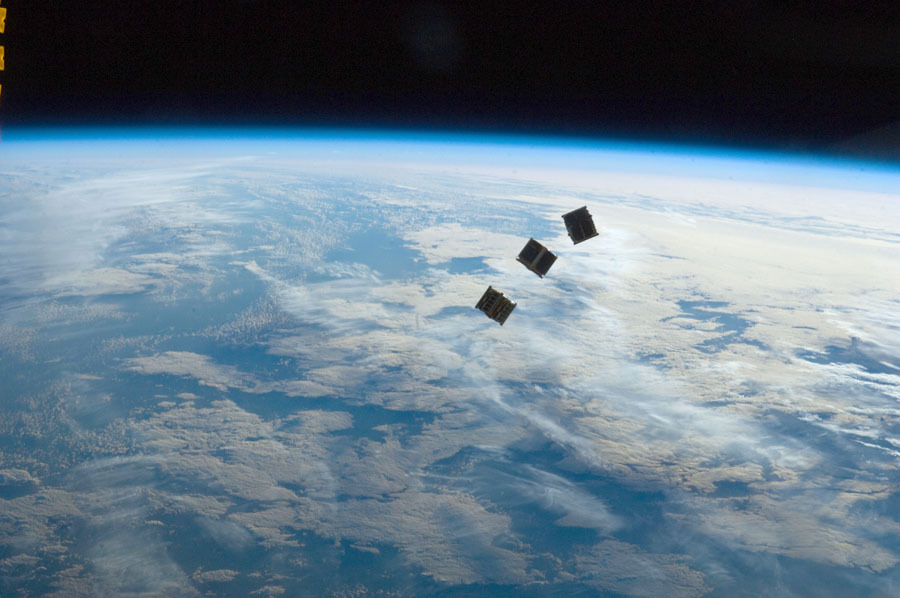
To be precise, it is not on the Earth’s orbit, but at a distance from the Sun equal to the distance of the Earth’s orbit. And for an absolutely black body, i.e. one that completely absorbs the sun's rays, not reflecting anything back.
')
It is believed that the temperature in space tends to absolute zero. Firstly, this is not entirely true, since the entire known Universe is heated to 3 K by relict radiation. Secondly, the temperature rises near the stars. And we live pretty close to the Sun. Strong thermal protection is needed for space suits and spacecraft because they enter the Earth’s shadow, and our luminary can no longer warm them to the indicated + 4 ° C. In the shade, the temperature can drop to -160 ° C, for example at night on the moon. It's cold, but absolute zero is still far away.
Here, for example, the testimony of the onboard thermometer of the TechEdSat satellite, which rotated in low earth orbit:

It was also influenced by the earth’s atmosphere, but on the whole, the graph shows not the terrible conditions that are customarily presented in space.
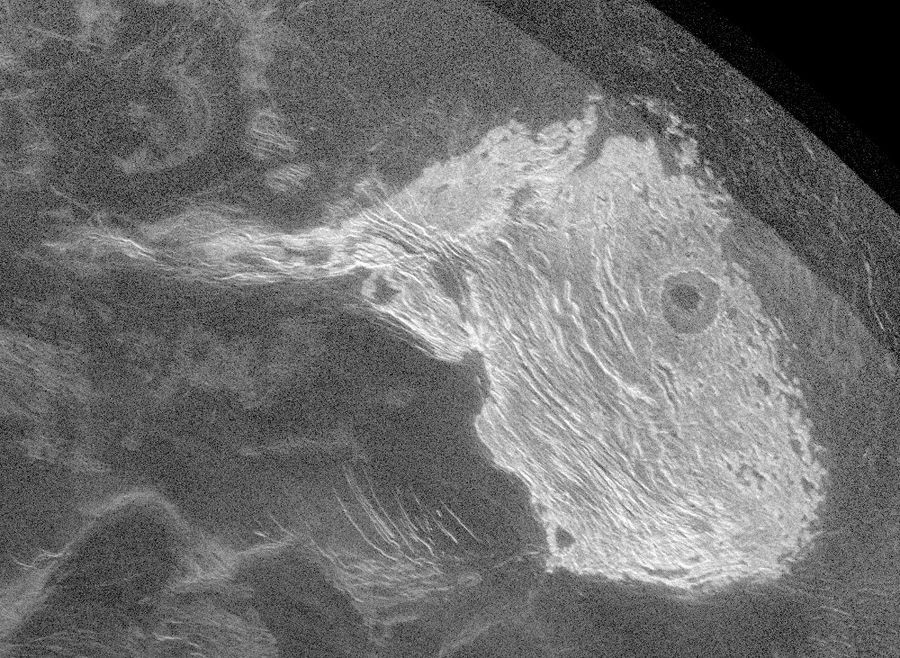
This is probably the most striking fact about space, which I learned not so long ago. The conditions on Venus are so different from everything that we could imagine that Venusians could easily fly to earthly hell to rest in a mild climate and comfortable conditions. Therefore, no matter how fantastic the phrase “lead snow” may seem, for Venus it is a reality.
Thanks to the radar of the American probe Magellan at the beginning of the 90s, scientists discovered on the tops of the mountains of Venus some kind of coating, which has a high reflectivity in the radio range. At first, several versions were supposed: the consequence of erosion, the deposition of iron-containing materials, etc. Later, after several experiments on Earth, they came to the conclusion that this is the most natural metallic snow, consisting of bismuth and lead sulphides. In the gaseous state, they are released into the atmosphere of the planet during volcanic eruptions. Then, thermodynamic conditions at an altitude of 2600 m contribute to the condensation of compounds and precipitation at elevations.
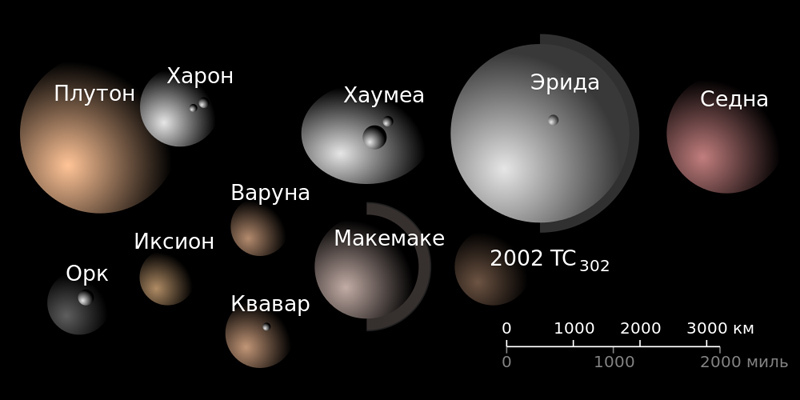
When Pluto was demoted from the planets, the rule of good taste was the knowledge that there are only eight planets in the Solar System. True, at the same time, they introduced a new category of celestial bodies - dwarf planets. These “under-planets”, which have a rounded (or close to it) form, are not anybody’s satellites, but, at the same time, they cannot clear their own orbit from less massive competitors. Today it is believed that there are five such planets: Ceres, Pluto, Hanumea, Eris and Makemake. The closest to us is Ceres. A year later, we learn about it much more than now, thanks to the probe Dawn. While we only know that it is covered with ice and water from two points on the surface evaporates at a speed of 6 liters per second. We will also learn about Pluto next year thanks to the New Horizons station. In general, as the year 2014 in space will be the year of comets, 2015 promises to be the year of the dwarf planets.
The rest of the dwarf planets are beyond Pluto, and we will not know any details about them soon. Just recently , another candidate was found, although he was not officially included in the list of dwarf planets, just like his neighbor Sedna. But it is possible that they will still find several larger dwarfs, so the number of planets in the solar system will grow.
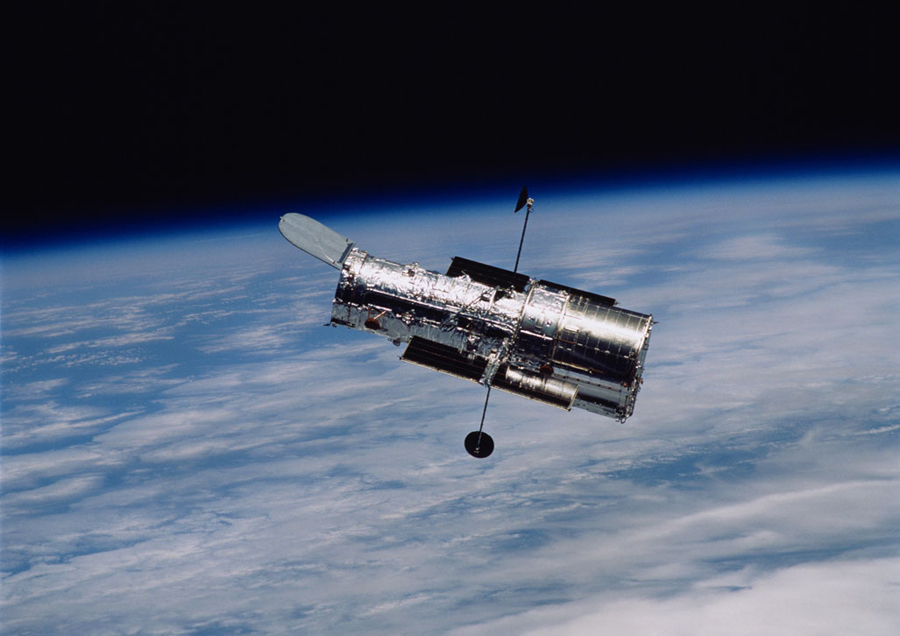
Thanks to the enormous volume of images and impressive discoveries, the perfect Hubble telescope, many people have the idea that this telescope has the highest resolution and is able to see such details that are not visible from Earth. For some time this was the case: in spite of the fact that large mirrors on telescopes can be assembled on Earth, the atmosphere makes a significant distortion in the images. Therefore, even a “modest” by earth standards mirror with a diameter of 2.4 meters in space, allows to achieve impressive results.
However, in the years that have passed since the launch of Hubble, terrestrial astronomy has not stood in place; several technologies have been developed that allow, if not completely getting rid of the distorting action of air, then significantly reduce its impact. Today, the Very Large Telescope of the European Southern Observatory in Chile is capable of providing the most impressive resolution. In the optical interferometer mode, when four main and four auxiliary telescopes work together, it is possible to achieve a resolution that exceeds the capabilities of the Hubble by about fifty times.
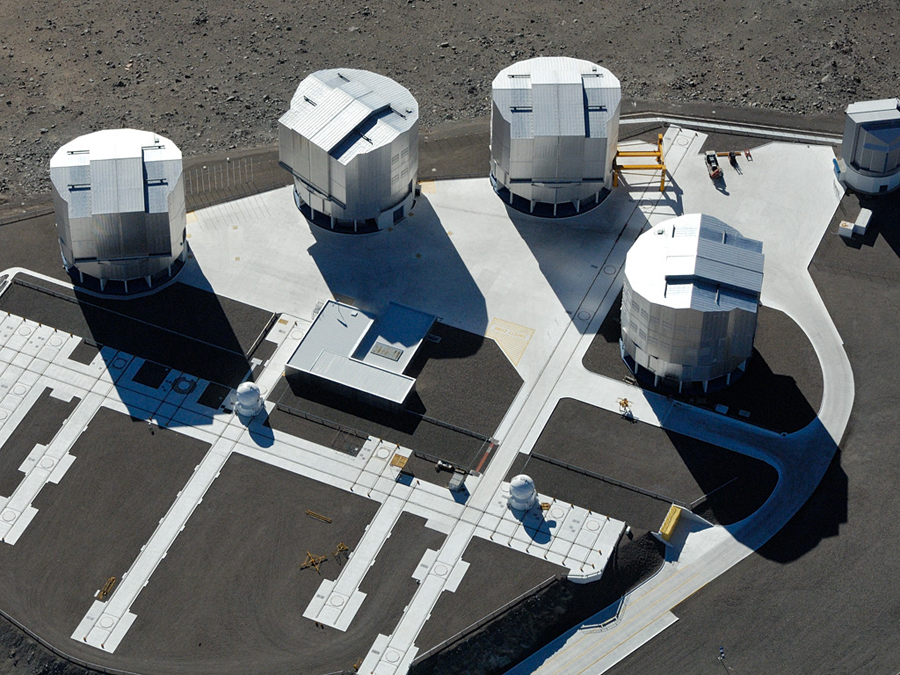
For example, if Hubble gives permission on the Moon about 100 meters per pixel (hello to everyone who thinks that Apollo landing gears can be considered this way), then the VLT can distinguish parts up to 2 meters. Those. in its resolution, American descent vehicles or our moon rovers would look like 1-2 pixels (but they will not look because of the extremely high cost of working time).
A pair of Keck Observatory telescopes, in the interferometer mode, can exceed the Hubble resolution by a factor of ten. Even individually, each of Keck's ten-meter telescopes, using adaptive optics technology, is able to beat Hubble twice. For example, photos of Uranus:

However, Hubble does not remain without work, the sky is large, and the breadth of the space telescope camera coverage exceeds ground capabilities. And for clarity, you can see complicated, but informative graphs .

The American popular science site leads , and Computerra translates curious calculations that show that traveling in the asteroid belt is not as dangerous as George Lucas imagined. If all asteroids larger than 1 meter are located on a plane equal to the area of the Main asteroid belt, then it turns out that one Kamenyuk falls on approximately 3200 square kilometers. 100 thousand bears of Russia should be distributed in pieces for every 170 square kilometers of territory. Of course, both asteroids and bears try to keep closer to themselves and desecrate pure mathematics with their uneven distribution, but for the sake of the holiday such trifles can be neglected.
The temperature in space, in the Earth’s orbit is + 4 °

To be precise, it is not on the Earth’s orbit, but at a distance from the Sun equal to the distance of the Earth’s orbit. And for an absolutely black body, i.e. one that completely absorbs the sun's rays, not reflecting anything back.
')
It is believed that the temperature in space tends to absolute zero. Firstly, this is not entirely true, since the entire known Universe is heated to 3 K by relict radiation. Secondly, the temperature rises near the stars. And we live pretty close to the Sun. Strong thermal protection is needed for space suits and spacecraft because they enter the Earth’s shadow, and our luminary can no longer warm them to the indicated + 4 ° C. In the shade, the temperature can drop to -160 ° C, for example at night on the moon. It's cold, but absolute zero is still far away.
Here, for example, the testimony of the onboard thermometer of the TechEdSat satellite, which rotated in low earth orbit:

It was also influenced by the earth’s atmosphere, but on the whole, the graph shows not the terrible conditions that are customarily presented in space.
Venus in some places lead snow

This is probably the most striking fact about space, which I learned not so long ago. The conditions on Venus are so different from everything that we could imagine that Venusians could easily fly to earthly hell to rest in a mild climate and comfortable conditions. Therefore, no matter how fantastic the phrase “lead snow” may seem, for Venus it is a reality.
Thanks to the radar of the American probe Magellan at the beginning of the 90s, scientists discovered on the tops of the mountains of Venus some kind of coating, which has a high reflectivity in the radio range. At first, several versions were supposed: the consequence of erosion, the deposition of iron-containing materials, etc. Later, after several experiments on Earth, they came to the conclusion that this is the most natural metallic snow, consisting of bismuth and lead sulphides. In the gaseous state, they are released into the atmosphere of the planet during volcanic eruptions. Then, thermodynamic conditions at an altitude of 2600 m contribute to the condensation of compounds and precipitation at elevations.
There are 13 planets in the solar system ... or more

When Pluto was demoted from the planets, the rule of good taste was the knowledge that there are only eight planets in the Solar System. True, at the same time, they introduced a new category of celestial bodies - dwarf planets. These “under-planets”, which have a rounded (or close to it) form, are not anybody’s satellites, but, at the same time, they cannot clear their own orbit from less massive competitors. Today it is believed that there are five such planets: Ceres, Pluto, Hanumea, Eris and Makemake. The closest to us is Ceres. A year later, we learn about it much more than now, thanks to the probe Dawn. While we only know that it is covered with ice and water from two points on the surface evaporates at a speed of 6 liters per second. We will also learn about Pluto next year thanks to the New Horizons station. In general, as the year 2014 in space will be the year of comets, 2015 promises to be the year of the dwarf planets.
The rest of the dwarf planets are beyond Pluto, and we will not know any details about them soon. Just recently , another candidate was found, although he was not officially included in the list of dwarf planets, just like his neighbor Sedna. But it is possible that they will still find several larger dwarfs, so the number of planets in the solar system will grow.
Hubble telescope - not the most powerful

Thanks to the enormous volume of images and impressive discoveries, the perfect Hubble telescope, many people have the idea that this telescope has the highest resolution and is able to see such details that are not visible from Earth. For some time this was the case: in spite of the fact that large mirrors on telescopes can be assembled on Earth, the atmosphere makes a significant distortion in the images. Therefore, even a “modest” by earth standards mirror with a diameter of 2.4 meters in space, allows to achieve impressive results.
However, in the years that have passed since the launch of Hubble, terrestrial astronomy has not stood in place; several technologies have been developed that allow, if not completely getting rid of the distorting action of air, then significantly reduce its impact. Today, the Very Large Telescope of the European Southern Observatory in Chile is capable of providing the most impressive resolution. In the optical interferometer mode, when four main and four auxiliary telescopes work together, it is possible to achieve a resolution that exceeds the capabilities of the Hubble by about fifty times.

For example, if Hubble gives permission on the Moon about 100 meters per pixel (hello to everyone who thinks that Apollo landing gears can be considered this way), then the VLT can distinguish parts up to 2 meters. Those. in its resolution, American descent vehicles or our moon rovers would look like 1-2 pixels (but they will not look because of the extremely high cost of working time).
A pair of Keck Observatory telescopes, in the interferometer mode, can exceed the Hubble resolution by a factor of ten. Even individually, each of Keck's ten-meter telescopes, using adaptive optics technology, is able to beat Hubble twice. For example, photos of Uranus:

However, Hubble does not remain without work, the sky is large, and the breadth of the space telescope camera coverage exceeds ground capabilities. And for clarity, you can see complicated, but informative graphs .
Bears in Russia are 19 times more common than asteroids in the main asteroid belt

The American popular science site leads , and Computerra translates curious calculations that show that traveling in the asteroid belt is not as dangerous as George Lucas imagined. If all asteroids larger than 1 meter are located on a plane equal to the area of the Main asteroid belt, then it turns out that one Kamenyuk falls on approximately 3200 square kilometers. 100 thousand bears of Russia should be distributed in pieces for every 170 square kilometers of territory. Of course, both asteroids and bears try to keep closer to themselves and desecrate pure mathematics with their uneven distribution, but for the sake of the holiday such trifles can be neglected.
Source: https://habr.com/ru/post/217775/
All Articles